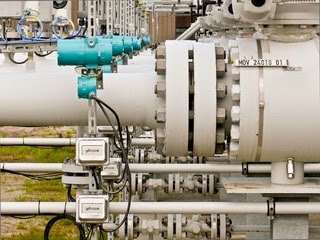 |
| Float Level Switch (courtesy of Magnetrol) |
 Float operated level switches are suitable for use on clean liquid applications alarm,
pump control and safety shutdown applications.
Float operated level switches are suitable for use on clean liquid applications alarm,
pump control and safety shutdown applications.These float type units are typically designed, fabricated and certified to compliance with ASME B31.3 specifications.
The design of float operated level switches is based upon the principle that a magnetic field will penetrate non-magnetic materials such as 316 stainless steel. In the case of a float type level switch, the float moves a magnetic attraction sleeve within a non-magnetic enclosing tube which in turn trips an electrical switch mechanism. The enclosing tube of housing provides a pressure seal for the chamber as well as the process.

As the liquid level rises in the chamber (refer to Figure 1), the float moves the magnetic attraction sleeve up within the enclosing tube, and into the field of the switch mechanism magnet. Resultingly, the magnet is drawn in tightly to the enclosing tube causing the switch to trip, “making” or “breaking” the electrical circuit.
As the liquid level falls, the float drops and moves the attraction sleeve out of the magnetic field, releasing the switch at a predetermined “low level” (refer to Figure 2). The tension spring ensures the return of the switch in a snap action.



